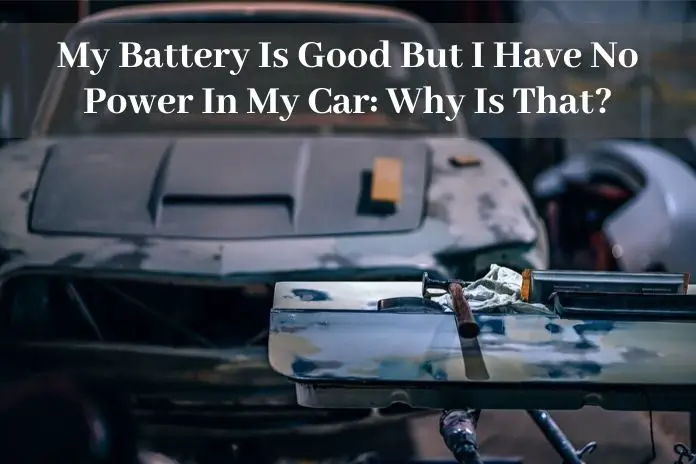
Every driver’s worst nightmare is having no power to run the engine. However, the scenario is inevitable. Lack of engine power often results from a faulty battery. But, there are instances when your battery may be good yet there is no power in your car.
My battery is good but I have no power in my car. Why is that? There are some conditions which can lead to such a scenario. They include:
● Poor wiring
● A bad ignition switch
● A bad alternator
Find More About These Issues Why They Are Happening to You…
1. Poor / Lose Battery Connections
Whenever you experience a problem with the car’s power supply, the first thing that should run through the back of your head should be the battery. What if the battery happens to be in good condition, or is even new? The next important thing you ought to consider should be the connections.
Often, your car may develop electrical problems because of poor connections. Therefore, if you experience an issue with the electrical supply, you ought to consider the wiring. You can start by checking the battery clamps to be sure they are tightly held. If you happen to be an off-road kind of a guy, the battery clamps may become lose because of the vibrations.
If you spot a lose grip, there is nothing to worry. You can easily tighten the clamps by yourself using a pair of pliers. Also, the battery clamps may become loose because of rust or old age. If that’s the case, you can then go ahead and replace them to avoid further inconveniences.
What If the Battery Clamps Happen to Be Okay?
If the battery clamps happen to be in good form and tightly held, it means that the problem is further in the wiring. You can trace down the wires running from the battery to check for any breakages. Often, wires tend to wear and tears, especially from the heat from the engine or moving engine parts. You can easily spot a breaking and replace it quickly.
2. Faulty Ignition Switch
It’s a fresh Monday morning and you just had some hot coffee. You are hoping that the day and week is going to be a success. Unfortunately, things start to escalate when you enter your car. It won’t start. What’s your next move? Cars are machines and they are prone to breaking down as long as they are used.
Whenever your car fails to start, the first thing that you ought to check is the battery. What if the battery in use is just new? The next thing you should check is the wiring. In the case that the wiring is on point, the problem may be as a result of a faulty ignition switch. Yes, a faulty ignition switch can see you unable to start the car.
Checking for a faulty ignition switch isn’t a straightforward task as compared to checking for loose wiring. If that’s the case, you will be needed to take apart the trim pieces so as to access the steering area or the dash. For the old vehicles and that use the key ignition system, taking apart the pieces can be easy.
However, if you use the recent car models, you may face a big challenge accessing and correcting the switch. After taking apart the region, you should start by checking out for any burned wires.
Often, the switch may have burned wires from short-circuiting. The best way to deal with the problem is replacing the burned wires once you spot. Immediately, the problem should be gone. When it comes to faulty ignition switches, it’s recommended that you consider hiring a pro to deal with the problem.
Mechanics know better when it comes to taking apart the pieces and rectifying the error. Therefore, if you are not sure where to start, don’t hesitate to call your mechanic.
3. Faulty Alternator
How does the engine in your car function? That’s one thing that most people are never sure. First, the car needs a battery to give the charge needed for the ignition. Once the alternator is powered, the battery is no longer needed. It’s the alternator that continues to provide the power needed.
The alternator as well helps convert the mechanical energy produced during the ride into charge. The extra charge is then directed into your battery. It’s for this reason that you will rarely have a flat battery as the alternator does the top up.
What If the Alternator Develops a Problem?
The answer is simple. It means that your battery won’t be charged during the journey. Also, the engine will end up using the charge from your battery. As a result, you will end up with a flat battery sooner than expected.
Therefore, if you ever find yourself without power yet the battery is in good condition, you should consider the alternator. Having a faulty alternator is a much bigger problem and you should consider carrying out the repairs as soon as you can. One disadvantage that comes with a faulty alternator is that it’s not easy to point out the problem by yourself.
So, How Can You Tell If Your Alternator Has an Issue?
Unless you are a mechanic, it’s not easy to tell if your car’s alternator has an issue. However, there are some signs that you can observe within your car, which should tell you that there is something wrong with the alternator. You can start by checking the dash and headlights.
For the dashboard lights, if they gradually dim, it means that the alternator has a problem. For the headlights, if you notice that they are turning brighter once you accelerate and dim when you stop; it means that there is something that needs to be done about the alternator. Therefore, if you happen to observe any of these signs, you shouldn’t hesitate to bring in your car to a repair shop for a new alternator.





